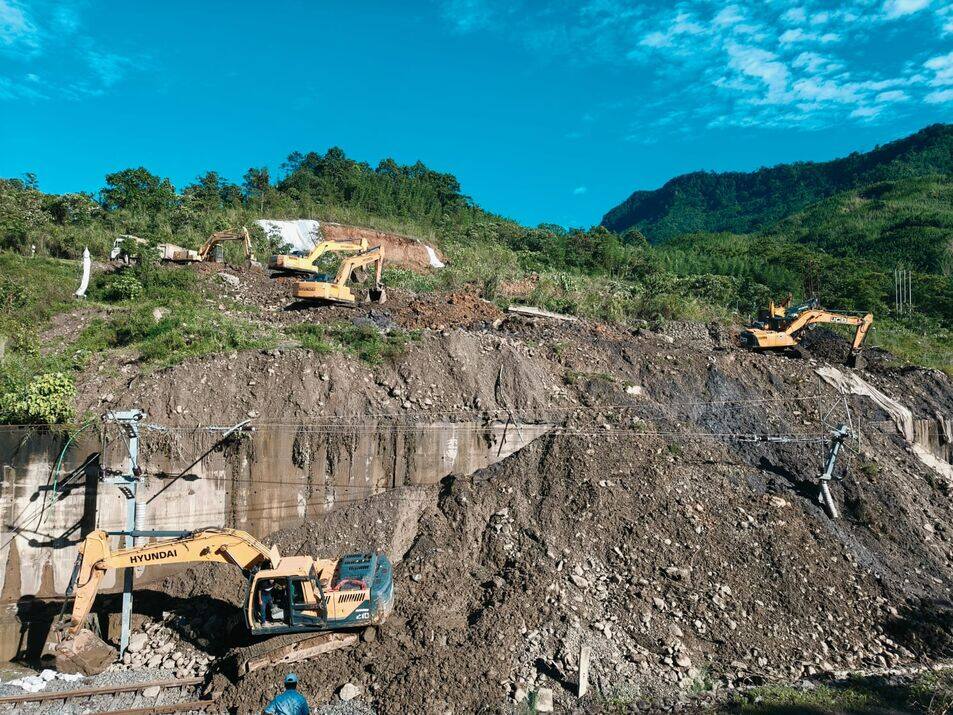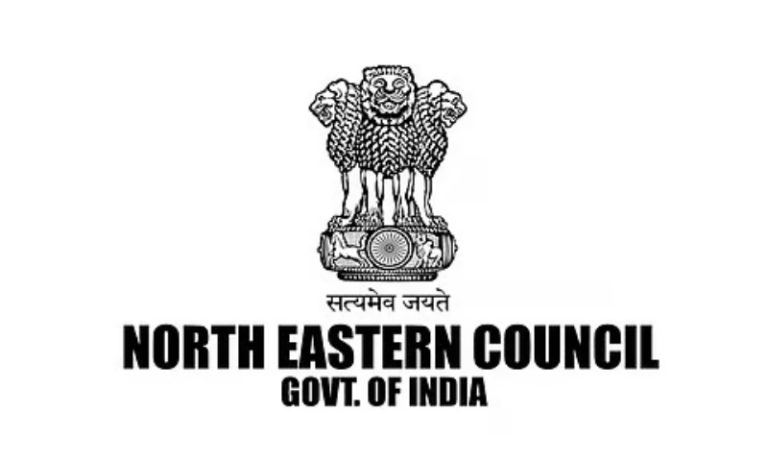Track Reopened, Hope Rekindled: How Assam’s Landslide-Damaged Rail Line Got Back on Track
Summary of the News
Train services in India’s Northeast were disrupted around June 22, 2025, due to massive landslides in Assam’s Lumding–Badarpur hill section, severing rail connectivity to Tripura, Manipur, Mizoram, and southern Assam. After six intense days of restoration work involving heavy machinery and multi-agency collaboration, partial connectivity resumed on June 29, with goods and passenger trains like the Kanchenjunga Express running again between Jatinga Lumpur and New Haflong Officials expect full restoration by Monday, June 30
1. Setting the Stage: Why This Matters
Ever imagine how a landslide can choke an entire region’s lifeline, the railway? In Assam’s picturesque hill zone—between Lumding and Badarpur—intense rains triggered a massive land slump around June 22. Nearly 100 meters of track vanished beneath tens of thousands of cubic meters of debris in Dima Hasao’s New Haflong–Jatinga Lampur stretch The result? A standstill of passenger and freight trains—cutting off Tripura, Manipur, Mizoram, and southern Assam. Rail travel, that vital artery linking communities, came to a sudden halt.
Imagine highways lined with wheels of steel, now dead-ended by a wall of earth. For locals, traders, students, and rural entrepreneurs, it felt like being cut off from the world.
2. Anatomy of the Disaster: What Went Down
a) The Burst of Rain
Monsoon fury unleashed relentless showers, soaking the slopes above the track. NHAI’s concurrent work on NH‑27 worsened soil instability. One day, the slope simply gave in.
b) The Collapse
Officials tallied around 50,000 cubic meters of mud and stones crashing onto the railway embankment At least 30,000 cubic meters had to be cleared before repair crews even thought about laying tracks again
c) The Domino Effect
Railway services—like the Guwahati–Silchar Express and the Kanchenjunga Express—either got cancelled or rerouted. All passenger traffic came to a grinding halt The region’s supply chain too felt the pinch—groceries, petroleum, medicines—all delayed.
3. Mobilizing the Rescue: Agencies in Action
The Multi-Agency Taskforce
- Northeast Frontier Railway (NFR) led the effort—deploying excavators, dumpers, and crews around the clock
- NHAI repaired adjacent roads to ease debris clearance and allow alternate vehicular movement
- State Government teams, local officials, and emergency workers collaborated, coordinating logistics, resources, and safety measures.
Speed and Strategy
Officials likened their pace to “war footing” . Senior officers camped at the site—Lumding Division’s DRM, NFR headquarters, plus district officials—making real-time decisions.
Safety First
Huge debris heavy; unstable slopes still dripping rain. Stabilization work preceded track repair, including laying sandbags, terracing slopes, and installing protective nets.
4. Partial Restoration: A Ray of Hope
On June 29, train movement partially resumed:
- Goods trains carrying petroleum, grains, and essential supplies were given priority
- The Kanchenjunga Express, a major passenger train, was among the first to cross the cleared patch
- Temporary windows (12:00–18:00) allowed limited service as crews continued hammering away. Full restoration was aimed by June 30
5. Ripple Effects: Why This Disruption Hurt
Communities at Standstill
Villagers who depend on rail to ferry goods to market now faced an income freeze. Travel options froze, too, affecting students, patients, tourists.
Economic Shockwaves
Freight delays increased delivery costs. Perishable goods risked spoilage. Petrol shortages loomed in Tripura and Barak Valley, reliant on rail.
Emotional Toll
Stories surfaced: grandparents missing grandchildren’s milestones; essential medical travel pushed back. A network glitch—felt deeply.
6. Lessons Learned: Infrastructure and Resilience
Hardened Design
These hill tracks run through geo-sensitive zones. Stabilizing slopes, adding retaining walls, and reinforcing embankments must be standard—not reactive.
Integrated Planning
NFR trains and NHAI roads share slopes. Future projects need geo-surveys across disciplines to prevent culvert triggers or land disruptions.
Early Warning Systems
Rain-triggered landslide sensors could pause traffic preemptively. Tech integration could buy critical hours.
Regional Cooperation
Assam’s quick fix involved state and national agencies. Could Tripura, Manipur, Mizoram prepare similar emergency link backups? Inter-state trust and coordination matter.
7. Tech Talk: Tools That Cleared the Track
- Earth movers & bulldozers carved through muck.
- Dumpers hauled debris to safe dumpsites.
- Slope nets & geo-blankets held stray mud.
- Track-laying gangs rebuilt subgrade and rail bed.
- Heavy graders resurfaced approach routes for backup road transport.
All sustained by power backup, field kitchens, and emergency shelters for night shifts.
8. Lives Behind the Rails
A Grain Trader’s Peril
Raju, a Silchar rice distributor, saw his 20-ton consignment stuck—frustrating losses. When the Kanchenjunga Express rolled through finally, he cried tears of relief.
A Student’s Journey
Meera, a med student in Agartala, missed her anatomy classes. A limited train service meant she could finally catch up—and return home over the weekend.
A Logistics Worker
Manpreet, a truck driver, recounts detours cutting delivery costs in half. Alternate roads meant a 3-hour delay, not reckoned as a full day lost.
9. The Bigger Picture: Railways in Monsoon Terrain
Northeast logistically relies on rail—not just for goods but for tourism, student mobility, cultural unity. Landslides during monsoons? Recurring. Contingencies are not luxuries—they’re lifelines.
Better:
- Geo-fencing to restrict heavy machinery during heavy rains.
- Slope maintenance contracts—year-round surveys, not just post-disaster.
- Community alert networks—local watchers, real-time reporting.
10. Onward Towards Resilience
Today’s Restoration = Tomorrow’s Standard
As full service resumes, it’s vital agencies don’t treat this as a one-time patch. Slope engineering, better drainage, landslide sensors must be institutionalized.
National Significance
The Northeast’s rail links underpin national connectivity. Their safety matters beyond local headlines—it reflects India’s commitment to its remote regions.
Public Participation
Officials said public cooperation, especially near Dima Hasao, where road diversions helped, was vital. Empowering locals to report preemptively could save infrastructure—and lives.
11. What Happens Next?
- June 30 expectations: full resumption of services, both passenger and freight
- Post-restoration audits: evaluate weak spots, assess debris stability.
- Budget allocations: NFR & NHAI to fund anti-landslide engineering in next rainy season.
- Public updates: regular safety advisories during monsoon, card distribution informing about alternate routes.
12. A Call to Readiness
This landslide should be a wake-up call. Monsoon’s here to stay. Engineers, planners, and citizens must treat instability as probability, not exception. Let’s build railways that don’t just run—but endure.
FAQs
1. Why did the landslide occur in the Lumding–Badarpur section?
Heavy monsoon rains destabilized slopes, and ongoing roadwork by NHAI exacerbated soil movement, causing a massive debris fall over the railway
2. How much debris was cleared to restore the track?
About 50,000 m³ of muck fell; crews had to remove at least 30,000 m³ before track repair could begin .
3. Which trains were the first to run after restoration?
The Kanchenjunga Express (passenger) and the first goods train carrying essentials crossed on June 29 during limited operational hours .
4. When will full rail connectivity return?
Officials planned for full restoration by June 30, 2025, following initial limited operations on the 29th
5. How can future disruptions be prevented?
By implementing slope stabilization engineering, early landslide-warning systems, coordinated road-rail planning, and routine geo-surveys—especially in monsoon-prone hills.






